With two acres of greenery, the Ashbridge Estate is a bit of an anomaly along a very urban stretch of Queen Street East near Woodbine Ave, across from the TTC’s Russell Carhouse. It was once part of a 600 acre farm. The Ashbridge family lived here for over 200 years, until they donated the house and remaining three acres of land to Ontario Heritage Trust in 1972. What history!
We were led by Philip van Wassenaer of Urban Forest Innovations, an arborist who has worked to preserve the trees on the property over the years. Here, he shows us the old practice of filling in holes in trees with concrete. This is no longer considered good arboriculture practice, as it prevents the tree from compartmentalizing its own wounds.

A central stop on the tour was this amazing willow tree. We know from diary entries that it was planted by Emma Rooney (married to Jesse Ashbridge) way back in 1919. Willows are water-loving trees, and back then, a stream ran through the area to nearby Lake Ontario. This tree has been slated for removal several times, but Philip has fought to keep this striking specimen alive. To ensurit does not pose a hazard, he has removed some of the larger branches and put a fence around its base to keep people away from where branches might fall.
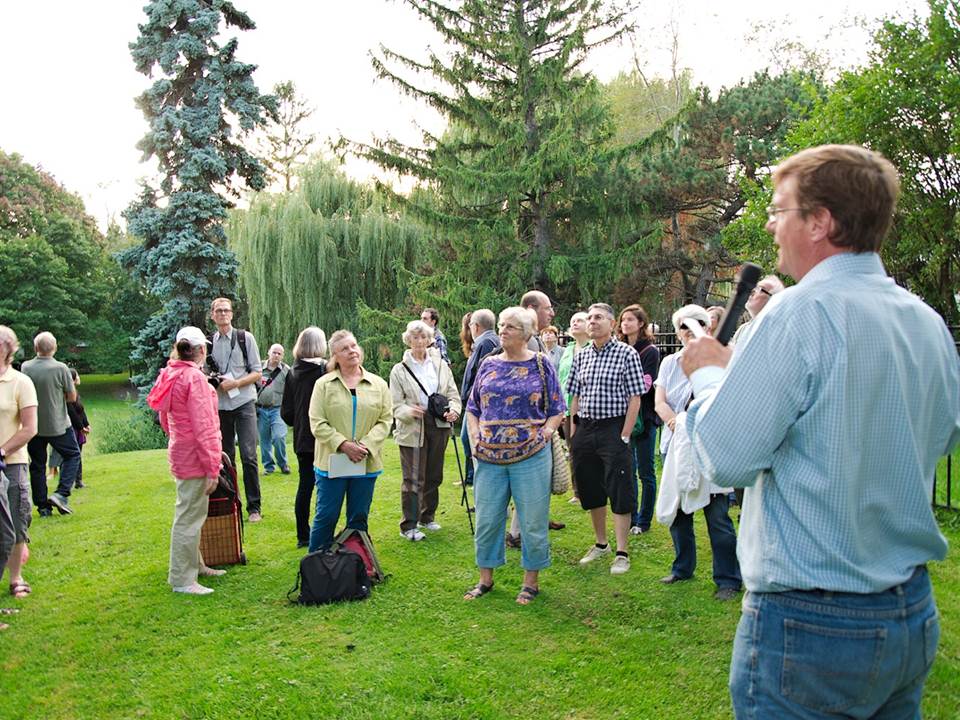
Here, Philip discusses some of the older trees on the property that are still quite healthy. In the background (right), you can see a Norway spruce, often planted as a windbreak on old farms such as these.
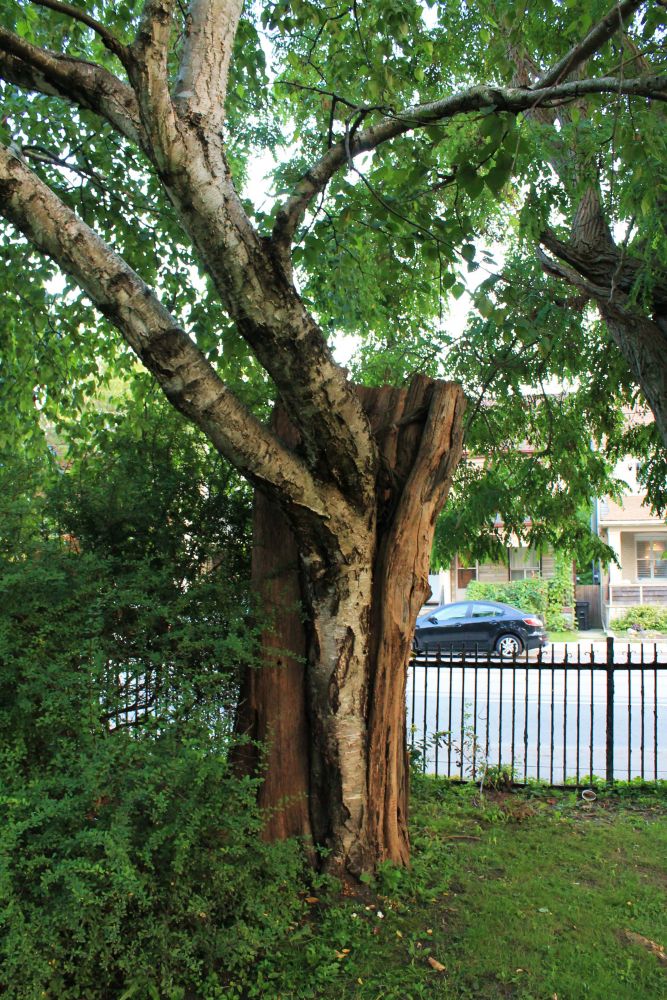
This is one of the stranger trees on the property. If you look closely, you’ll see that it’s actually two trees! An old black locust tree was cut down in the 1970s, but the tall snag (trunk) was left. A birch seed must have landed inside of the snag, from which the second tree started growing. It’s grown down to the ground and up to the sky, protected by the strong black locust stump.
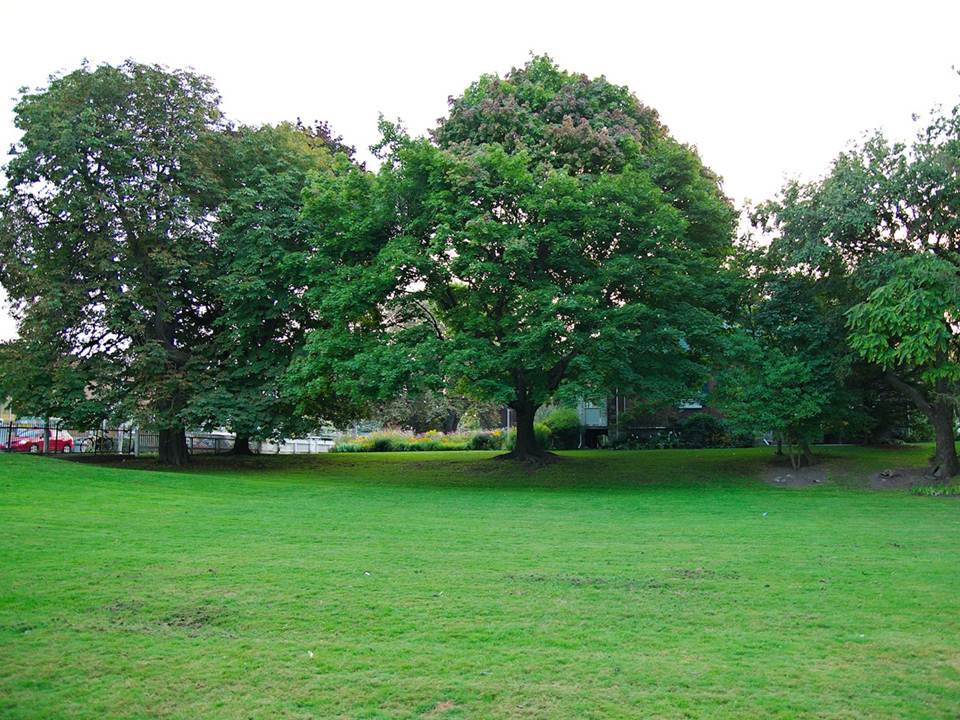
This imposing Norway maple was probably planted to provide shade for the house. As an aging, non-native tree, many people would have taken it down. But because history is important here, and because the tree is a major feature on the Ashbridge property, Philip has worked to keep it going, pruning a large, cracked branch to reduce its weight and attaching a cable so that if it does break, no one gets hurt.
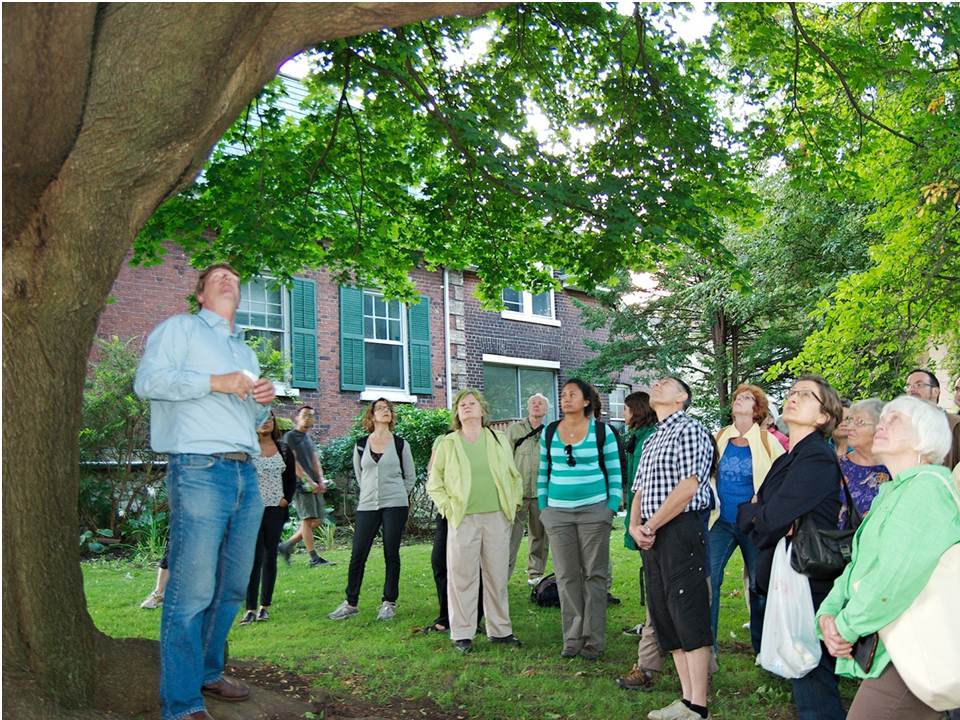
Here, the group checks out the Norway maple from beneath its canopy.
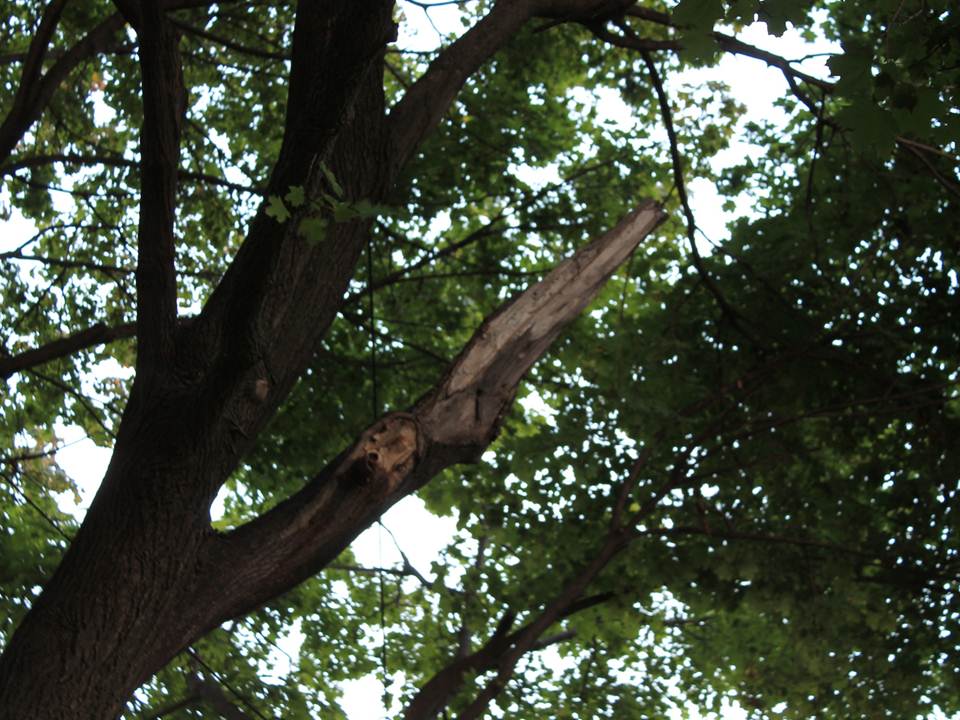
What’s this dead branch doing here? Well, removing such a large branch would leave a huge open wound, and Norway maples are known to be quite susceptible to decay. Instead, the end of the branch will decay slowly, sending a signal to the tree that is should compartmentalize the area where the base of the branch meets the trunk. In the meantime, this branch will provide habitat for all sorts of fungi, insects and birds.
We ended the tour just as the light was fading. What a great way to spend a September evening!
If you’d like to attend a LEAF tree tour, we have one coming up on Sunday, October 5th: Milne Hollow: A natural history walking tour. See you there!
Robyn Stewart is the Education & Outreach Coordinator at LEAF. LEAF Tree Tours are supported by Ontario Power Generation.
